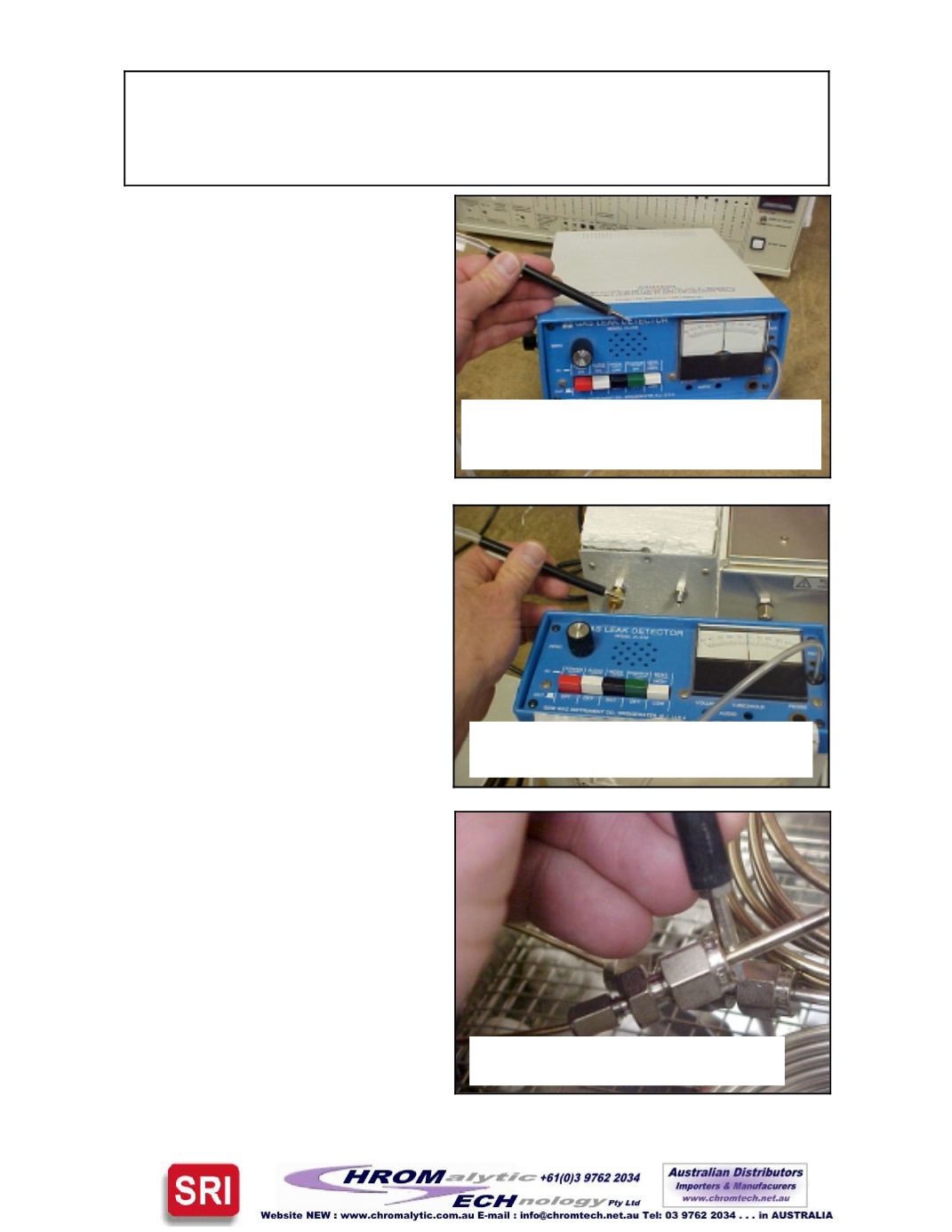
Man263.pub
Chapter: Troubleshooting
Topic: LeakChecking your GC
The secondmethodof leak check-
ing is to use a
leakdetector
.
LeakDetectors aremade by sev-
eral differentmanufacturers, but in
most cases they consist of a vac-
uumpump anda thermistor detec-
tor whichmeasures the thermal
conductivity of the gas that is
suckedup through thehand held
probe. When heliumor hydrogen
flows through the thermistor, the
thermal conductivity is a little
greater than the thermal conduc-
tivity of air, so there is a response
on themeter of the LeakDetector.
Apply gas pressure to the system
then sniff aroundall the fittings
with the LeakDetector. Thedis-
play on the LeakDetector indi-
cates a leak.
Unlike the liquid leak check solu-
tion, theLeakDetector canbe
usedonhot fittings, but is difficult
to use if there is any airflow
around the fittings ( such as ina
GCovenwith the fan running ).
Some leaksmay be too small to
detect, and some fittingsmay be
in-accessible. Be careful with the
probearound live electrical circuits
or heaters
Thehand-held probe is used to sniff around the
fitting for leakinghelium or hydrogen
Commercial leak detectors areavailable from sev-
eral differentmanufacturers. Prices range from
about $600 to$2000.
Theprobe can be usedon hot fittings, unlike
the liquid leak check solution
page 2 of 4


